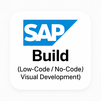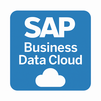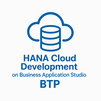
The SAP IS-Utilities (IS-U) Course offers comprehensive training on managing end-to-end utility business processes for electricity, gas, water, and waste management companies. It covers core modules like Billing, Device Management, Contract Accounts Receivable (FI-CA), Energy Data Management (EDM), and Work Management. Participants learn configuration, integration with CRM and S/4HANA, and handling deregulated energy markets. Through hands-on exercises and case studies, learners gain the expertise to implement, customize, and optimize SAP IS-U solutions for efficient utility operations and enhanced customer service.
SAP IS Utilities Training Interview Questions Answers - For Intermediate
1. What is the role of the Premise in SAP IS-U?
A Premise represents the physical location where utility services are provided, such as a home, office, or factory. It acts as the link between the connection object and the contract, defining the point of service delivery. Each premise can be associated with one or more devices for metering consumption and is crucial for structuring service addresses and billing relationships within IS-U.
2. What is the Connection Object in SAP IS-U?
The Connection Object represents the technical network location where utility connections are installed, such as a building or complex. It groups multiple premises under one physical address and provides a hierarchical view of the network. It helps utility providers manage service installations, connections, and maintenance activities efficiently.
3. What is a Point of Delivery (POD) in SAP IS-U?
A Point of Delivery (POD) identifies the exact point where energy or water is delivered to the customer. It is a key element for energy data management and billing, as it defines the interface between the utility network and the customer’s installation. Each POD can have its own measurement devices and contractual terms.
4. Explain the concept of Rate Categories and Rate Types.
Rate Categories define the general tariff structure applicable to a customer based on service type or consumption level, while Rate Types define detailed pricing conditions within that structure. For example, domestic and industrial customers may share the same Rate Category but differ in Rate Types for time-of-day or seasonal pricing. Together, they determine how charges are calculated during billing.
5. How does Meter Reading processing work in IS-U?
Meter Reading involves the collection of consumption data from measuring devices. The system schedules meter reading orders, captures readings manually or automatically, validates them, and stores them in the database. Validated readings are then used in billing to calculate energy or water consumption accurately.
6. What is the role of the Device Category in SAP IS-U?
The Device Category defines the type, technical characteristics, and measurement capabilities of a device. For example, it differentiates between electricity, gas, or water meters. It also determines the permissible registers, installation parameters, and allowed measurement units, ensuring consistent configuration and processing across similar devices.
7. How does SAP IS-U handle budget billing or installment plans?
Budget billing allows customers to pay estimated charges in equal installments rather than variable monthly bills. The system calculates the estimated annual consumption and divides it into periodic payments. Adjustments are made at the end of the billing cycle based on actual meter readings to reconcile over- or under-payments.
8. What is a Contract in SAP IS-U?
A Contract represents the legal agreement between a customer (Contract Partner) and the utility company to provide a specific service, such as electricity or gas supply. Each contract links to a premise, device, and contract account. It governs the terms of service, pricing, billing cycle, and validity period.
9. What is the use of Profile Values in Energy Data Management (EDM)?
Profile Values store time-based consumption data for customers using interval meters. They capture data at regular intervals (e.g., every 15 minutes or hourly) to analyze load curves, peak demands, and consumption trends. This data is critical for energy optimization, load forecasting, and dynamic pricing in deregulated markets.
10. What is the role of Integration Model in SAP IS-U?
The Integration Model defines how IS-U integrates with other SAP or non-SAP systems. It supports seamless data exchange with SAP CRM, SAP BW, SAP PM, and external market systems. Through middleware such as SAP PI/PO, utilities can synchronize master data, billing, and financial information across platforms efficiently.
11. Explain the concept of Disconnection and Reconnection in IS-U.
Disconnection and Reconnection are managed processes within IS-U to handle non-payment or maintenance scenarios. When a customer fails to pay, the system triggers a disconnection document that halts service. Once dues are cleared, a reconnection order is generated to restore service. These processes are tightly integrated with FI-CA and Work Management.
12. What is a Meter Reading Reason in IS-U?
A Meter Reading Reason specifies the purpose for which a meter reading is taken, such as periodic billing, move-in, move-out, or special reading. It ensures proper classification of meter readings for auditing and billing purposes, helping the system to select the right data for processing.
13. How is the DPC (Device, Point of Delivery, Contract) relationship structured?
The DPC structure defines the logical link between Device, Point of Delivery, and Contract in IS-U. A device records consumption, the POD defines the physical delivery point, and the contract determines the commercial agreement. This relationship ensures technical and commercial data integrity for accurate billing and analysis.
14. What is the use of Work Management (WM) in SAP IS-U?
Work Management handles field operations such as meter installations, maintenance, and service orders. It manages task scheduling, resource allocation, and order tracking. Integrated with PM (Plant Maintenance), it provides full visibility into service execution, ensuring timely completion of field activities.
15. How does SAP IS-U support deregulated energy markets?
In deregulated markets, SAP IS-U enables the separation of roles between energy suppliers and network operators. It supports data exchange using standardized formats like EDIFACT and manages market communication between multiple stakeholders. The system ensures compliance with industry regulations, transparent billing, and smooth switching of energy providers.
SAP IS Utilities Training Interview Questions Answers - For Advanced
1. How does the SAP IS-U architecture support scalability and high-volume processing in large utility enterprises?
SAP IS-U is built on a three-tier architecture—presentation, application, and database layers—optimized for handling millions of customers and high transactional loads. It employs parallel processing frameworks, mass processing tools, and background job scheduling for performance scalability. Database partitioning, buffering, and logical system distribution enhance throughput. Integration with SAP NetWeaver ensures modular flexibility, while mass data frameworks like EMMA (Enhanced Message Management Application) help manage large datasets for billing and metering. SAP HANA further improves scalability through in-memory computing, accelerating queries, aggregations, and analytics for large-scale energy providers.
2. Explain the role of EMMA (Enhanced Message Management Application) in SAP IS-U.
EMMA is a framework within SAP IS-U used for processing mass data messages and monitoring data inconsistencies across key processes like billing, invoicing, and device management. It centralizes error handling by grouping failed messages and providing tools for correction and reprocessing. For instance, if a billing run encounters missing meter readings, EMMA flags the issue, assigns an error category, and routes it to the responsible user group for resolution. EMMA enhances operational transparency, improves mass processing efficiency, and supports automatic workflow-based corrections.
3. How does SAP IS-U handle integration with GIS (Geographic Information Systems)?
Integration with GIS enables spatial visualization and management of utility assets such as networks, meters, and connection objects. SAP IS-U connects with systems like ESRI ArcGIS via middleware or SAP Geo.e, allowing synchronization of geographic and technical data. Each connection object and premise in IS-U can be geo-coded, enabling location-based asset management, outage tracking, and field planning. This integration allows utilities to visualize service areas, optimize field routes, and conduct impact analysis in the event of outages or network expansions.
4. What is the difference between Technical Master Data and Business Master Data in SAP IS-U?
Technical Master Data includes objects related to the physical infrastructure such as connection objects, premises, devices, and installations. Business Master Data, on the other hand, pertains to the commercial relationships and includes business partners, contract accounts, and contracts. The technical layer ensures accurate measurement and data acquisition, while the business layer governs billing, payments, and customer management. Together, they maintain the logical and physical consistency required to process utility operations from service delivery to payment receipt.
5. How are complex tariff structures managed in SAP IS-U using Schema and Operand configurations?
SAP IS-U’s flexible tariff engine uses schemas and operands to calculate charges for diverse pricing models. A schema defines the calculation sequence, while operands represent variables like consumption quantity, time-of-use, or regional surcharges. Rate steps within schemas can incorporate mathematical operations, conditional checks, and external data references. For example, an electricity provider can define a schema that applies different rates for peak and off-peak hours. Configuration in transaction EA30 and operand creation in EA41 allow dynamic tariff adaptation without code changes.
6. How is synchronization maintained between SAP IS-U and external meter data collection systems?
Synchronization with external Meter Data Management (MDM) or Head-End Systems (HES) is achieved through SAP’s MDUS (Meter Data Unification and Synchronization) interface. This bidirectional communication ensures that consumption data, device status, and event messages are consistently updated. Data validation and estimation occur automatically, and exceptions are logged for review. The interface supports standards like IEC 61968 and CIM for interoperability. Integration ensures real-time visibility into metering data, enabling accurate billing and operational analytics for smart grids.
7. Describe the workflow of a Disconnection/Reconnection order in SAP IS-U.
The disconnection/reconnection process begins with a dunning or maintenance trigger that creates a disconnection document. This document is transferred to Work Management, which generates a service order assigned to a technician. Once the field activity is confirmed, the system updates device status and service availability. Reconnection follows a similar process, initiated upon payment clearance or service restoration request. SAP IS-U ensures end-to-end visibility by linking the order to FI-CA postings, enabling complete financial and operational traceability.
8. What are the most critical tables in SAP IS-U and their purposes?
Key IS-U tables include EGERH (Meter Reading Order Header), EVER (Contract Data), EKUN (Contract Account), EABL (Billing Document), EASTS (Rate Steps), EDISCDOC (Disconnection Document), and EQUI (Equipment Master). Each stores essential data for billing, device management, or financial processing. Understanding table relationships allows consultants to extract data for reports, debug issues, and optimize performance through indexing. Advanced users often link EABL, EVER, and FKKVKP for financial and billing reconciliation.
9. How does SAP IS-U handle exception management during mass billing runs?
During mass billing, the system automatically identifies exceptions—such as missing readings or incorrect rate categories—and flags them through EMMA or the Exception Monitor. Exception categories determine resolution workflows, and users can set up automated error correction via user exits. The Billing Workbench (EASIBI) provides a consolidated view of problematic contracts. Parallel processing and job scheduling in SM37 optimize performance while allowing exception isolation to avoid halting entire billing cycles.
10. How does the system handle back-billing and adjustment processes?
Back-billing is triggered when previous billing periods require recalculation due to meter errors or tariff changes. SAP IS-U automates this through the Reversal and Rebill functionality. The system reverses affected billing documents and regenerates new ones with updated parameters, ensuring compliance with financial audit requirements. Adjustments flow automatically to FI-CA for financial correction. The process also supports interest recalculation and customer communication through automatically generated correspondence.
11. What is the significance of POD (Point of Delivery) in deregulated markets, and how is it structured in IS-U?
In deregulated energy markets, the Point of Delivery (POD) serves as the unique identifier for energy exchange between the supplier and the network operator. In IS-U, a POD links the technical data (devices, registers) with contractual data (supplier, contract). It supports legal and billing segregation between market roles. Each POD is assigned an identification number and associated with a premise, connection object, and division. This ensures transparency and compliance in energy data reporting, supplier switching, and settlement processes.
12. How does SAP IS-U support predictive maintenance using integration with SAP PM and IoT?
Predictive maintenance in IS-U integrates IoT sensors with SAP PM to monitor device health and detect anomalies. Device data collected through smart meters or sensors is transmitted in real time to SAP IoT or SAP Predictive Maintenance and Service (PdMS). When thresholds are breached, the system triggers maintenance notifications or work orders automatically. This proactive approach reduces equipment downtime, improves customer satisfaction, and extends asset lifespan, aligning with modern utility strategies for smart infrastructure.
13. Explain how SAP IS-U supports dynamic pricing and real-time billing for smart grids.
Dynamic pricing allows utilities to adjust tariffs based on real-time consumption or demand. SAP IS-U integrates with EDM and smart metering systems to collect interval data. Pricing schemas can incorporate real-time data from SCADA or market prices. Through configurable rate determination logic, IS-U recalculates prices dynamically for billing periods, enabling utilities to offer flexible tariffs. The integration with SAP HANA allows near-instantaneous recalculation and customer notification, enhancing transparency and demand-side management.
14. How is master data replication handled between SAP IS-U and SAP S/4HANA Utilities Cloud?
In the S/4HANA landscape, master data replication is achieved using SAP Master Data Integration (MDI) services or ALE/IDoc interfaces. Business Partner, Contract Account, and Contract data are replicated across systems to maintain consistency. Replication can occur in near real time using SAP Cloud Integration (SCI) or batch mode using IDoc processing. Data harmonization is managed through unique identifiers and change pointers, ensuring synchronization between the on-premise IS-U system and the Utilities Industry Cloud modules.
15. What are the steps for migrating a legacy IS-U system to SAP S/4HANA Utilities?
Migration to S/4HANA Utilities follows a structured approach involving system assessment, data cleansing, and conversion using tools like the Software Update Manager (SUM) with Database Migration Option (DMO). Custom code is analyzed through the Simplification Item Catalog to ensure compatibility with HANA’s data model. Data migration involves extracting and transforming IS-U master and transactional data, followed by validation in S/4HANA. Post-migration, processes such as billing and dunning are revalidated, and Fiori applications are deployed for role-based access. This modernization enhances performance, reduces total cost of ownership, and positions utilities for AI- and analytics-driven operations.
Course Schedule
| Nov, 2025 | Weekdays | Mon-Fri | Enquire Now |
| Weekend | Sat-Sun | Enquire Now | |
| Dec, 2025 | Weekdays | Mon-Fri | Enquire Now |
| Weekend | Sat-Sun | Enquire Now |
Related Courses
Related Articles
- What Makes Emerson DeltaV DCS Training So Valuable Today?
- What Can You Learn from Primavera Unifier Admin Training?
- Career Opportunities with Machine Learning Online Training
- Top 10 Benefits of Learning PingAccess Administration
- Microsoft Azure DevOps: The Cloud-Based Solution for Your Software Development Needs
Related Interview
Related FAQ's
- Instructor-led Live Online Interactive Training
- Project Based Customized Learning
- Fast Track Training Program
- Self-paced learning
- In one-on-one training, you have the flexibility to choose the days, timings, and duration according to your preferences.
- We create a personalized training calendar based on your chosen schedule.
- Complete Live Online Interactive Training of the Course
- After Training Recorded Videos
- Session-wise Learning Material and notes for lifetime
- Practical & Assignments exercises
- Global Course Completion Certificate
- 24x7 after Training Support












 Join our Live Instructor-Led online classes delivered by industry experts
Join our Live Instructor-Led online classes delivered by industry experts